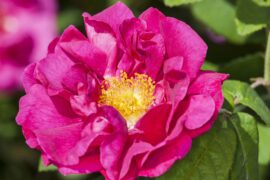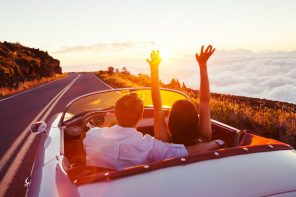The Essence of World Architecture
Architecture shapes our world. It blends art, science, and culture to create spaces that inspire and serve us. Let’s explore the core of great design and the visionaries behind iconic buildings.
Defining Architecture and Design
Architecture is the art of designing buildings and spaces. It’s about more than just looks. Good design makes places work well for people. You can see this in famous buildings like the Eiffel Tower or the Sydney Opera House.
Architectural design means considering the feel, function and implementability of a building. It includes choosing materials, planning the layout and selecting the shape.
A good architect focuses on aesthetics as well as practicality, and needs to consider the working area of the relevant construction machinery to ensure that it does not interfere with the building’s structural design. It’s also important that the area is flexible and can be safely used to carry out work.
When you visit a well-designed building, you might notice:
- How light moves through spaces
- The flow between rooms
- Materials that fit the surroundings
- Shapes that catch your eye
Legacies of Pioneering Architects
Famous architects have made their marks across the world. Frank Lloyd Wright changed American homes with his “organic architecture.” His Fallingwater house seems to float over a waterfall.
Zaha Hadid used curvy design to conquer new design territory, and you can see her style in the Heydar Aliyev Center in Azerbaijan. It looks like a giant wave frozen in time. Oscar Niemeyer gave Brazil’s capital, Brasília, its futuristic look. His buildings often use simple curves and lots of open space.
These architects and others have shaped how we think about buildings. Their work shows that architecture can be both useful and beautiful. When you visit their creations, you’re seeing history and art combined.
Architectural Marvels by Region
Amazing buildings can be found all over the world, with the unique history and design from different destinations shaping their architecture. Let’s take a tour of some incredible structures across different continents.
Europe’s Historical Edifices
Europe is home to many famous old buildings. The Eiffel Tower in Paris is a must-see icon. This iron lattice tower reaches 324 meters high and offers great views of the city.
In Italy, the Colosseum in Rome still stands after almost 2,000 years. This huge amphitheater once held up to 80,000 people for gladiator fights and other events.
Russia’s Saint Basil’s Cathedral in Moscow catches the eye with its colorful onion domes. The unusual shapes and patterns make it look like something from a fairy tale.
Turkey’s Hagia Sophia in Istanbul shows how buildings can change over time. It started as a church, became a mosque, and is now a museum. Its massive dome is an engineering marvel in gold.

The Architectural Tapestry of Asia
Asia has both ancient wonders and modern marvels. Perhaps the most well know is the Great Wall of China which is more than 21,000 kilometers long. Parts of it are over 2,000 years old.
India’s Taj Mahal is known for its beauty and perfect symmetry. This white marble tomb was built by an emperor for his wife in the 1600s.
Kuala Lumpur’s Petronas Towers in Malaysia used to be the tallest buildings in the world. These twin skyscrapers reach 452 meters high and are linked by a skybridge.
Meanwhile, Beijing National Stadium (or “Bird’s Nest”) in China played host to the 2008 Olympic Games. Its unique steel frame design looks like twigs in a nest.
Modernism in the Americas
The Americas showcase bold new designs. The Guggenheim Museum in New York City looks like a white ribbon curled into a cylinder. Its spiral ramp gallery is unlike any other museum.
Brazil’s capital city, Brasília, was planned and built in just four years. Its futuristic government buildings have striking curves and shapes.
The Sydney Opera House in Australia is known for its white shell-like roof. It sits right on the harbor, making it a stunning sight from land or sea.
In Chicago, the Willis Tower (formerly Sears Tower) was the world’s tallest building for over 20 years. Its black exterior and antenna spires are an iconic part of the skyline.
African Structures: A Blend of Tradition and Modernity
Africa mixes old and new in its buildings, and Egypt’s famous pyramids remain just as spectacular after 4,500 years. These massive stone tombs for pharaohs took decades to build.
In Mali, the Great Mosque of Djenné is the world’s largest mud-brick building. It’s rebuilt every year by the whole community.
Morocco’s Hassan II Mosque in Casablanca is a modern masterpiece, with the tallest minaret in the world at 210 meters. The mosque is so vast that 25,000 worshippers can gather here, with a further 80,000 outside.
Also noteworthy is South Africa’s Constitutional Court in Johannesburg. The design features local art with the building represents the country’s shift to democracy after apartheid.
Iconic Landmarks and Their History
Iconic landmarks shape our world’s skylines and cultural landscapes. They tell stories of human ingenuity, artistic vision, and spiritual devotion across centuries and continents.
Skylines That Tell Stories
The Eiffel Tower is the famous icon of Paris. Built for the 1889 World’s Fair, this 1,063-foot iron lattice tower wows visitors with its stunning views. You can dine in its restaurants or gaze out from observation decks.
San Francisco’s Golden Gate Bridge is another example of engineering genius. Its elegant orange span stretches 2 miles across the bay entrance. The bridge opened in 1937 after four years of construction.
The ancient Pyramids of Giza showcase Egyptian ingenuity. These massive stone structures have endured for over 4,500 years. They’re the last remaining wonder of the ancient world.

Churches, Domes, and Sacred Structures
The Sistine Chapel in Vatican City is a must-see for art lovers. Michelangelo’s breathtaking frescoes cover the ceiling, with “The Last Judgment” proudly displayed on the altar wall.
St. Peter’s Basilica dominates the Vatican skyline with its massive dome. You can climb to the top for panoramic views of Rome.
Commissioned by Shah Jahan in the 17th as a mausoleum for his wife, India’s Taj Mahal is a stunning monument to love. Its white marble domes and minarets reflect in serene pools.
The Architectural Tour Experience
Architectural tours offer a unique way to explore cities and learn about famous buildings. You can see landmarks up close and discover hidden gems in different neighborhoods. Virtual tours now make it possible to visit amazing places from home too.
Navigating Through Cities and Neighborhoods
On an architecture tour, you’ll walk or ride through city streets and neighborhoods. Your guide will point out interesting buildings and explain their history and design. In Chicago, you might cruise along the river to see skyscrapers from a new angle. Paris tours often take you through charming areas like Montmartre or the Latin Quarter.
Tours help you notice details you might miss on your own. You’ll learn about different architectural styles and how they reflect the city’s culture. Some tours focus on specific themes like Art Deco buildings or sustainable design.
Famous Buildings and Tours
Many tours highlight world-famous landmarks. You could visit the Sydney Opera House or explore Moscow’s ornate metro stations. In Beijing, tours often include the Bird’s Nest stadium and other modern marvels.
The Chicago Architecture Center offers popular boat tours on the Chicago River. You’ll see over 50 buildings and learn how the city rebuilt after the Great Fire of 1871.
Some tours let you go inside famous buildings. You might climb to the top of the Eiffel Tower or explore Frank Lloyd Wright homes in Los Angeles.
Virtual Tours in the Digital Age
Can’t travel? Virtual tours bring amazing architecture to your screen. Many museums and landmarks now offer 360-degree views online. You can “walk” through the Louvre or zoom in on details of the Taj Mahal.
Some virtual tours use videos or live guides to make the experience more interactive. You might join a group Zoom tour of New York City’s Art Deco skyscrapers.
Virtual tours let you visit places that are hard to access in person. You could explore a remote castle or see inside buildings that are closed for renovations.

The Role of Community and Development
Communities shape architecture, and architecture shapes communities. You’ll see how cities grow and change through their buildings. Let’s explore how people and places work together to create amazing spaces.
Architectural Growth and City Planning
You can see how cities plan their growth in their buildings. The Loop in Chicago is a great example. It has tall skyscrapers that show how the city has grown over time.
As you walk around, you’ll notice how different areas have their own style. Hyde Park has old houses next to newer buildings. Kenwood mixes mansions with smaller homes.
City planners work hard to make sure new buildings fit in with the old ones. They think about how people will use the spaces and move around the city.
Sustainable Development and Future Trends
You’ll see more eco-friendly buildings popping up. Architects are using new materials and designs to save energy and water.
Green roofs are becoming popular. They help cool buildings and give people nice places to relax. Many new builds also produce their own energy using solar panels.
Cities are also making more shared spaces. You might see new parks or community centers. These help bring people together and make neighborhoods nicer.
Smart technology is changing buildings too. New homes and offices can control heating and lighting automatically, saving energy at the same time.
Appreciating Architecture in Person
Seeing famous buildings up close lets you take in all the details. You can admire the materials, snap photos, and even taste local cuisine near iconic structures.
Photography and Architecture
Taking photos of famous buildings helps you remember the experience. You can capture the whole structure or zoom in on interesting parts. Try different angles to show the building’s shape. Marble columns and brick walls look great in photos. Get shots of art deco skyscrapers at sunset for dramatic lighting.
Bring a wide-angle lens to fit tall buildings in the frame. Look for reflections in nearby windows or water. Take photos of people to show the scale of huge structures. Don’t forget to put your camera down sometimes and just enjoy the view with your own eyes.
Architecture and the Culinary Arts
Many famous buildings have great restaurants nearby. You can enjoy local food while admiring the architecture. The Guggenheim in Bilbao has a Michelin-starred restaurant inside. In Chicago, you can eat deep dish pizza with views of modern skyscrapers.
Try food from street vendors near architectural landmarks. In Mexico City’s historic centre, you can eat tacos while looking at colonial buildings. Prague’s Old Town Square has food stalls near Gothic churches. Eating local cuisine adds to your experience of a city’s culture and design.





